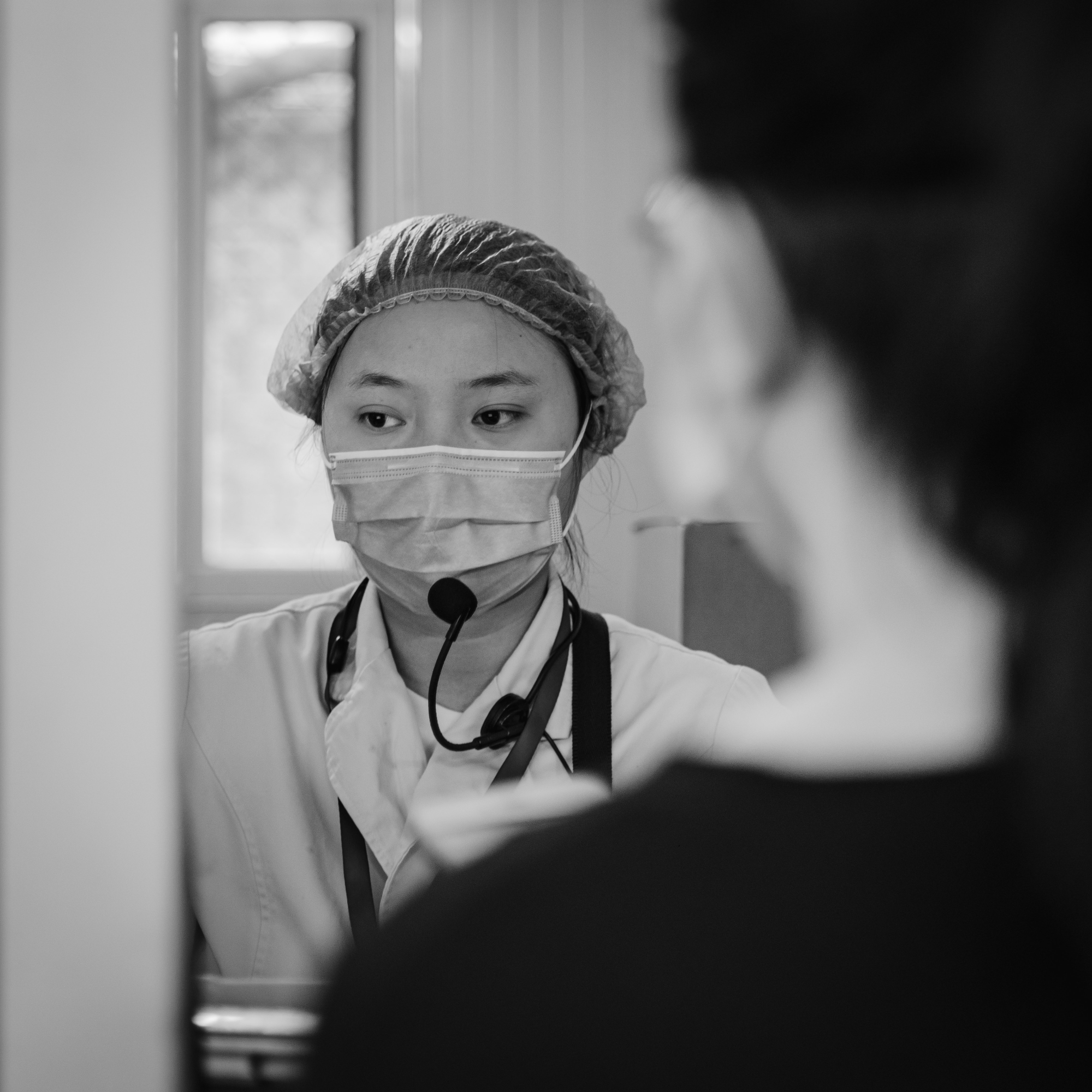We recently continued our Future of Healthcare Virtual Roundtable Series with a session featuring Dr. Graham Mooney, an assistant professor of the History of Medicine at the Johns Hopkins University School of Medicine. His research focuses on the history of public health interventions and the relationship between public health policies and population health outcomes.
Dr. Mooney’s recent book, Intrusive Interventions: Public Health, Domestic Space, and Infectious Disease in England, 1840–1914, examines the history of public health interventions, such as infectious disease notification, institutional and domestic isolation, disinfection, and contact tracing. Despite contact tracing coming to the fore in our recent COVID times, it is a discipline with a rich history.
Below is an excerpt of Dr. Mooney’s presentation with some key takeaways about how empathy and a mastery of soft skills should lead our efforts to more effectively and compassionately trace and tackle infectious diseases. To view the full recording, including a contact tracing training VR simulation, visit our YouTube channel.
“One of my interests is the history of infectious diseases, and contact tracing is an important aspect of interventions around trying to control infectious disease historically.
In fact, it’s become a central aspect of all kinds of disease management interventions. I think maybe 6 months, 12 months ago, not everybody would have known much about contact tracing. We now know a little bit more, but that also means that it gives us an opportunity to think about the history, and where it came from, and how it developed, and why it developed, and why it looks like it does in the present.
What do we mean when we talk about contact tracing? At its very most basic, contact tracing involves identifying people who have an infectious disease. That is people who may have been exposed to the disease and working with those people, both the person who has the disease and their contacts, to stop the future spread of the disease.
The COVID-19 Crisis and the Current Need for Effective and Empathic Contact Tracers
What the COVID-19 pandemic has done is caused a massive increase in the demand for people who are able to do contact tracing. The people who are responsible for contacting individuals who have the disease and then finding out who their contacts are are very much in demand.
Training for contact traces as a knock-on effect has also become important. There are a number of places where the training for contacts tracing has been done, but it’s important to know that it’s likely as we transition into a new presidential era that the expansion of contact tracing isn’t going to slow down. That’s because most people see contact tracing as being the key element of encouraging people to comply with the sorts of social distance recommendations and guidelines that we’re all now very familiar with.
A number of organizations have ramped up their training for contact tracing. My own institution Johns Hopkins, as well as Purdue, University of California, UCSF, and Houston are all amongst leading schools of public health and medicine that are contributing to the training of people who are going to be employed by local and state health departments to contact people who have had the disease and work out who else has been exposed.
The Challenges and Opportunities of Contact Tracing in Curbing a Pandemic
There are serious problems and issues around contact tracing. One of the issues is that it’s very difficult to scale up a program like contact tracing. We’ve seen in lots of different places, not just in the US but also in Europe, big issues around scaling up, around getting the technology in place so that you can train people because you can’t have people come into an office to do that training and everything’s online. You need to set them up with software at home and on laptops.
It’s been very difficult to get the contact tracing operation up and running. There are scale issues here, even though we know that contact tracing does work. What are the challenges that are faced by contact tracers? You have to give people unfortunate news. Nobody wants to know that they’ve got an infectious disease. You have to ask for information that’s private and confidential. In order to get that information from people, you need to build a rapport with somebody who you’ve only just got in contact with. You’re handling important, difficult information, sensitive information, and the contacts you may have very difficult life situations.
Contacts might not trust the government or the public health system. We learn by trial and error in some ways. You can only teach empathy up to a limit. There’s ways in which you can only cultivate your own empathy through doing, through experiential learning. It takes time for an individual contact tracer to build up that skill set in order for them to be able to maximize their ability to get information out of people that they need.
There's ways in which you can only cultivate your own empathy through doing, through experiential learning.
As we’ve seen, there’s a surge in cases which increases demand, it puts great pressure on the system. Also, people, they’re getting tired with pandemic particularly in situations where holidays are coming up and we’re used to seeing family and friends mixing and socializing and sharing bread around a table. That makes it really difficult for people to cope with the demands of something like contact tracing. They’re the kinds of challenges we’ve got in the present moment.
Public Health vs. Personal Freedoms
Public health often requires people to give up their freedoms, give up your ability to go to a bar and have a drink whenever you want, your ability to go down to your local library and take out a book, your ability to work, to earn a living. Quite often public health interventions request and ask of us to restrict those freedoms. One of the ways in which we can reframe that, I argue from a historical perspective and the ways in which public health professionals from the mid 19th century onwards have argued, is that in fact these public health interventions yes, they might be restricting your freedoms in some ways, but they’re also giving you freedoms in others.
Imagine what it’s like if you can, 9 months ago, 12 months ago, where you had all those freedoms where you were free from the threat of infectious disease and pandemics. The freedom that we’re really after is the freedom to live a free life. You have to manage the infectious disease in order to do that. In the 19th century when public health really became an important node of government activity, these were the sorts of arguments that they were seeking to make. They recognized that they had to restrict people’s freedoms and how people lived their lives but they also said, ‘Hey, it also buys us that freedom if we control epidemics and pandemics.’
We can only do that, we can only buy that freedom if we have effective infectious disease management in place. One of the things as I’ve already said is the development of contact tracing is a key aspect of managing infectious disease. There are many ways in which contact training fits into a whole range of interventions including things like hospitalization, infectious disease hospitals, or, say, tuberculosis sanatorium.
People used to have their houses disinfected if they had an infectious disease and their clothes and their property disinfected. Contact tracing was part of this whole package of measures, if you like, that emerged at the end of the 19th and early 20th century as formal government interventions to control infectious disease. The realization was that similar to now, people didn’t always want to do these things, they didn’t want to restrict their freedoms in any kind of way. Or the costs were too great for them to do that, to undergo these interventions.
What we need to ask ourselves are a bunch of questions around the development of the history of contact tracing in order to understand why it’s important now. Why are these issues key and significant?
How Contact Tracing Became a Key Component of Disease Prevention
The task of making diseases notifiable which began in the late 19th century in cities, states, nations across the West, is the key first step to contact tracing. If you don’t know where the patients are or the people with the disease, you can’t find a contact.
These systems of notification were very important and significant. What problems could we face? Although reporting infectious disease is very common, we’re not all very familiar about or happy with our information about our disease being shared. We’re not used to that as patients. That’s one problem is that people may resist consulting their physicians or even going for a test if they think that they might have a disease. People are worried about sharing information beyond government agencies. We’ve had big tech being involved in the development of mobile apps for contact tracing.
What happens if that information gets into the wrong hands? That’s an important consideration, that’s a problem. People, as I mentioned earlier, might not want to share information because for a variety of reasons, they don’t trust government and that’s a problem. Also, they’re worried about the possible impact that contact tracing can have on your friends, relatives, and associates from having to isolate, to not go to work to prevent you from caring if you’re a primary carer of a child or a family member who may be ill.
They’re the main problems that we can see and contact tracing is also part and parcel of a system of regulations around social distancing and masking that people resent and they see it as a problem to reducing their freedoms to go about their daily lives. How can empathy make a difference in contact tracing? This is really important. Public health people in the late 19th century used to bribe people, they used to pay them. There are some economic compensation packages around in different parts of the world for people who have to isolate.
How can empathy make a difference in contact tracing?
I think we need to be empathetic in order to meet people where they’re are. I think for the contact tracing, empathy in and of itself is great, but it also helps you focus on the problem in hand, which is controlling disease transmission. It helps you gain understanding of why they might not, for example, want to share information. I think finally, what’s most important is that in some senses, it helps you become less judgmental as a contact tracer. The issue at stake isn’t why somebody contracted the disease. What was somebody doing, what was their behavior when they contracted the disease? Were they in a place they shouldn’t have been according to local guidelines and so on?
It takes the focus away from that. Let’s be nonjudgmental about why you got the disease and focus on actually controlling and managing the disease. I think empathy helps us understand that because it squeezes out judge mentality from our approach to disease control.
Let's be nonjudgmental about why you got the disease and focus on actually controlling and managing the disease.
Emotional Intelligence Training for Contact Tracers
It’s absolutely fascinating that until relatively, maybe until the 1940s when contact tracing for sexually transmitted diseases became important, people weren’t given specific training in this. Usually, it was left to people such as what were called sanitary inspectors or nuisance inspectors who were there to monitor and regulate things like drains and housing regulations and so on. They weren’t actually trained in the understanding and realizing how difficult it is and trying to build a bond. They realized it was important, but they weren’t given any specific training in it. I think how it’s developed over the last 50 or 60 years ago is really intriguing.
One thing I would say is, you could say who predicted this, who could have ever predicted this, but it was predicted. It’s just that it’s difficult to imagine even when something happens exactly what needs to be done. I think that the question around scalability is more about the disaster management planning that’s in place previous to anything that happens. You’re not letting that go out of date, not letting it become stale, imagining the kinds of scenarios around different in relation to infectious disease.
The Role of the Contact Tracer
Another question is how much do contact tracers find out about other circumstances of their contacts when they’re in touch with them? For example, do you know if you’re talking to a person who has a physical disability? Do you know if they have any other disorder that enables you to contextualize the information and that would enable you to be even structurally and culturally competent in the ways that you need to be when you’re doing contact tracing?
Electronic communications and medical records have enabled some of this information to be meshed together so that it becomes greater than the sum of its parts. I think mobile technology is going to be really important. I think there are issues around confidentiality and maintaining privacy. I also think that responsibility is devolving upon the individuals who use this technology. You think in terms of apps and mobile technology. It’s the shifting of where the focus is going to be when these things go wrong. It’s going to be much more on the focus of the individual as it is upon the government or the agency that is providing those technologies.
An interesting thing to countenance is our ability to do the contact trace all depends upon other contexts of what’s going on in the world around us. That’s an important thing. Studies that have been done on the historical epidemiology of this, have shown that what we call the non-pharmaceutical interventions.
The closing of schools, the restricting public gatherings, closing theaters, and cinemas, and restaurants, and faith-based gatherings. Places that intervened early, and for a long time had much lower case rates and incidence rates than the places that either didn’t implement those things or were slow on the uptake. I think that was a big lesson that was being put forward in the early parts of this pandemic, is we need to do this early and deeply.”
Subscribe for the latest Mursion articles and updates.
By clicking the sign up button above, you consent to allow Mursion to store and process the personal information submitted above to provide you the content requested. View our Terms and Conditions.




